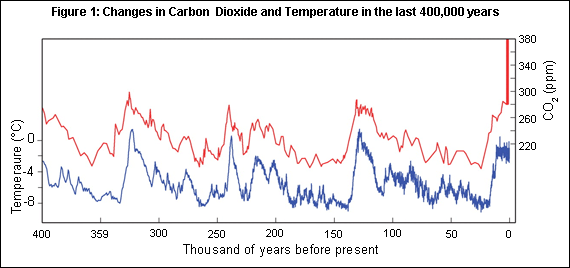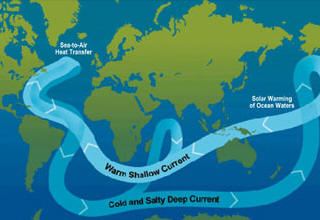An Inconvenient Truth
Test on the Film
| 1. | One of the main causes of global warming is: A) pollution from cars, B) gasses released from trees, C) co2 from power plants, D) both A & C. |
| 2. | True=A, False=B, Opinion=C: Americans' share of world green house gas pollution is less than the Chinese because America has far fewer people. |
| 3. | The science of global warming has been around: A) since the 1950s, B) 1970s, C) 1990s, D) only the last five years. |
| 4. | True=A, False=B, Opinion=C: There is general debate in the scientific community about the assertion that the planet is getting warmer. |
| 5. | True=A, False=B, Opinion=C: There is general debate in the scientific community about the assertion that human behavior is driving current global warming. |
| 6. | In the popular press, it can be generalized that: A) the opinion there agrees with that of the scientific community, B) has been in the lead informing scientists about the issue of global warming, C) there has been a campaign to create confusion about the agreement of scientists over the global warming threat, D) both A & C. |
| Use graph 1 to answer questions 7 - 9. | |
| 7. | This graph measures the co2 (greenhouse gas) and: A) pollution, B) water levels, C) temperature, D) ice levels. |
| 8. | This graph depicts a "correlation" and not necessarily a cause-effect relationship. This means that when one changes A) there is usually, but not always in the other item studied, B) the two things seem to "fit together" and are related, as when one changes so does the other in uniform fashion, C) there is no change in the other, D) none of these. |
| 9. | The graph shows us that co2 levels in the future will be: A) below that of previous years, B) about the same as previous years, C) unpredictable, D) not enough information to tell as it deals with the past. |
| 10. fill-in | The precautionary states that when something is of such extreme urgency we must act, even before we have absolute proof. |
| 11. | Global warming is an economics issue because: A) the White House is responsible for it, B) it will be up to government to fashion policies to deal with it, C) it will affect our use of limited resources, D) will will cause more extreme weather. |
| 12. | Another reason global warming is an economics issue is because: A) it will create more conflicts between nations, B) it will cause consumers to change the way they live and businesses how they operate, C) the courts will become increasingly involved, D) none of these. |
| 13. | Which of the following is NOT a reason the United Nations Security Council has taken up the issue of global warming? A) it will cause mass migrations of people to neighboring states, B) President Bush requested they do so, C) It will cause intense competition for dwindling resources like water, D) both A & C. |
| Use image 2 for questions 14 - 17. | |
| 14. | The image is that of: A) America's Navy sea routes, B) the ocean conveyer of water flows, C) the wind patterns that make up our seasons, D) the migratory patterns of sea life. |
| 15. | As presented in the film, these patterns help keep which continent warm and temperate. A) North America, B) South America, C) Europe, D) Asia. Hint: The winds blow from west to east in the affected area. |
| 16. | The possible outcome of a shutdown of these patterns could result in which catastrophic climatic occurrence? A) Ice Age, B) Hurricane, C) Tornadoes, D) Desertification. |
| 17. | The occurrence in no. 16 would be the result of the shutting down of the water flow patterns because of the desalinization of salt water due to: A) the melting of Greenland's ice, B) the tsunamis created by global warming, C) pollution of the water from acid rain, D) none of these. |
| 18. | The oil lobby, like the tobacco industry around cigarettes and lung cancer, tried to: A) stop the problem of its product to protect the public, B) wage a campaign of confusion around the the issues related to global warming, C) profited heavily from the product without consequences, D) all of these. |
| 19. | Of the three misconceptions about global warming which one relates to the answer to question 18? A) the problem is too big to do anything about, B) there's debate in the scientific community about basic science of global warming, C) there's a solutions to global warming, D) we must choose between the environment and the economy. |
| 20. | Of the three misconceptions about global warming which one relates to the fact that we already know what to do to effectively address the issue of global warming? A) the problem is too big to do anything about, B) there's debate in the scientific community about basic science of global warming, C) there's a solution to global warming, D) we must choose between the environment and the economy. |
| 21. | Of the three misconceptions about global warming which one relates to a false choice? A) the problem is too big to do anything about, B) there's debate in the scientific community about basic science of global warming, C) there's a solutions to global warming, D) we must choose between the environment and the economy. |
| 22. | True=A, False=B, Opinion=C: The Bush White House had censored the opinions of government scientists who warned of the real threat of global warming. |
| 23. | Which popular consumer product is the biggest contributor to the problem of global warming? A) The television, B) air conditioners, C) the automobile, D) computers. |
| 24. | Which of the following behaviors would NOT help a person reduce his/her greenhouse gas emissions, but contribute to global warming? A) flying in a jet airplane instead of taking a train, B) taking a train instead of a jet airplane, C) using fluorescent light bulbs instead of incandescent light bulbs, D) eating closer to the bottom of the food chain by refraining from from eating meat. |
| 25. | What is at stake if we do not respond fast enough to the global warming crisis? A) The economic interests of America, B) the drop in the Dow Jones Industrial Average, C) your popularity with members of the opposite sex, D) The ability to live and sustain a civilization on planet earth. |
![]()
Graph 1

Source: http://epa.gov/climatechange/science/images/co2-temp.gif
![]()
Image 2

Adapted from source: http://www.usgcrp.gov:80/usgcrp/Library/nationalassessment/overviewcoastal.htm
![]()